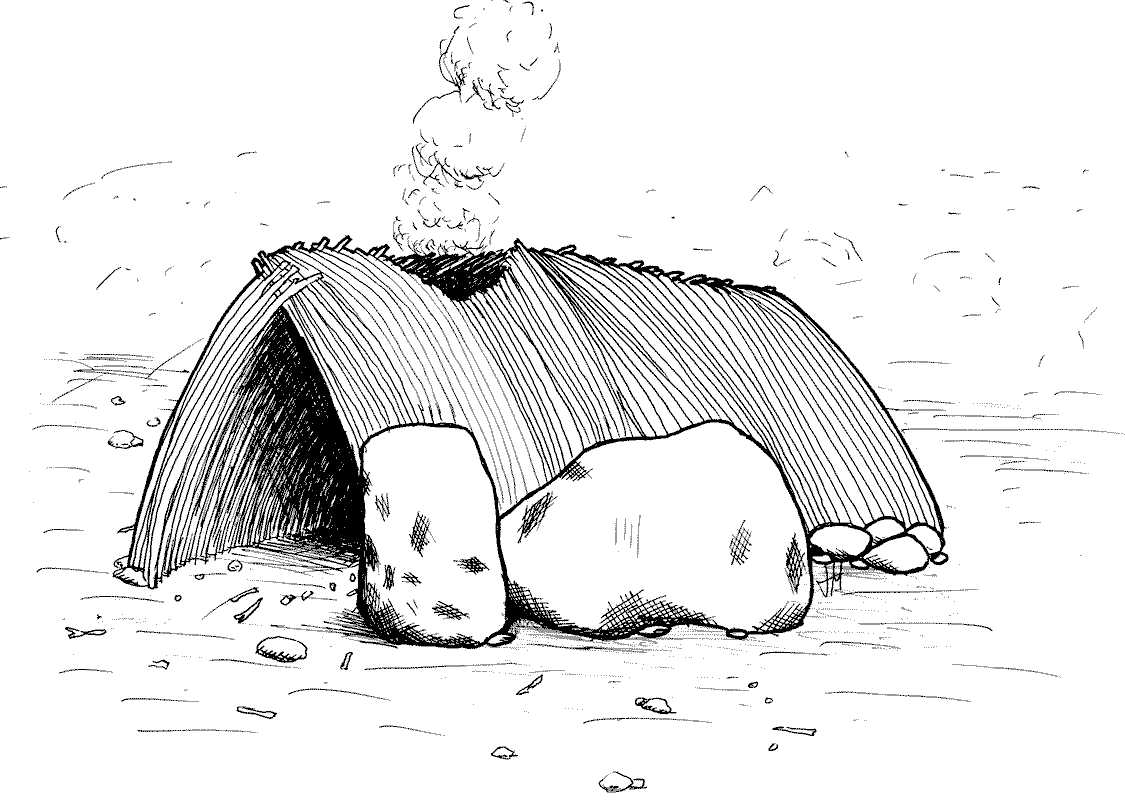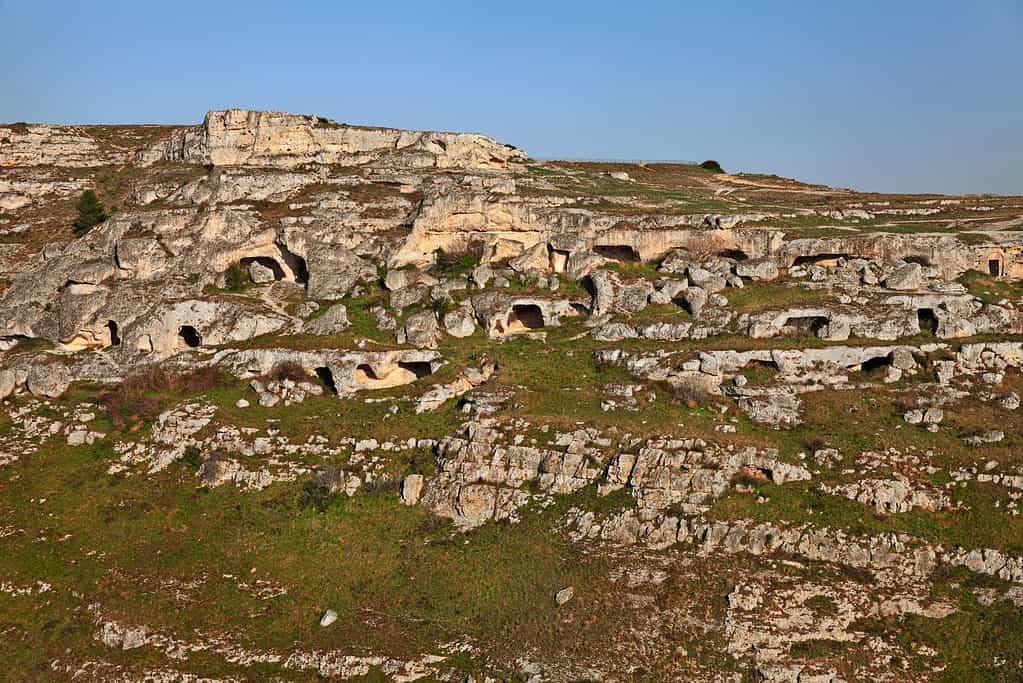Dating some of the earliest dwellings that humans resided in is a bit dubious due to the impermeability of most of the building materials used during construction. However, there are still old houses in use in Europe and the country of France has some of the oldest buildings on the continent. Is the oldest house in France the oldest in Europe? Let’s take a look at the facts.
What is the Oldest House in France?
The oldest house in France is evidence of a shelter located at the Terra Amata dig site which hosts a myriad of archaeological remains of ancient hominids. The temporary homes that used to exist at this location are believed to be around 400,000 years old. While there are ancient cave dwellings that are older, this is the first evidence of purposeful human construction geared directly toward habitation.
While the huts are no longer standing, there is substantial evidence of their existence. This includes parts of a foundation, holes for posts, and remnants of contained fires in hearths for cooking. The huts were probably made with large branches secured with stones.
These temporary homes existed along a now-extinct beach near fresh water. This site was a good spot to obtain important food animals like deer and boar during the right season. The homes weren’t put up permanently and were meant to last through summer as people passed through while hunting.
What’s remarkable about this site is that it shows that humans may have had defined territories at an early stage in communal development. It’s believed that the individuals temporarily inhabiting the site returned every year. This may demonstrate that these people aren’t migrating far away during the winter.

The oldest house in France is evidence of a shelter located at the Terra Amata dig site.
©Locutus Borg, Public domain, via Wikimedia Commons – License
Is the Oldest House in France the Oldest in Europe?
The oldest evidence of hominid housing is in France but the oldest house still standing in Europe is not in France. The earliest hominid housing discovered in Europe is at the Terra Amata site in France. The oldest standing house in Europe is a stone structure located in Orkney, Scotland.
Modern humans have hominid ancestors and some of these ancestors had a similar intelligence level to the people living today. Unfortunately, few of the building materials that most of our predecessors used didn’t survive the test of time so only more recent intact homes still exist. There are hundreds of thousands of years between the oldest home ever in Europe and the oldest standing home on the continent.
What is the Oldest Standing House in France?
The oldest standing house in France is the Maison de Jeanne in Aveyron. It was built in the Middle Ages and was erected around 1478. It’s called the Maison de Jeanne because that was the name of the last owner though the local government owns it today.
The house consists of several floors on a sloping corner in a small town. The bottom floor is the smallest because taxes at the time were based on the ground area that the building takes up. There’s a cellar that was originally used for livestock.
Originally, the house had walls made from cob which is a sturdy building material made from straw, water, dirt, and maybe lime. The house used to be faced with stones that are no longer present. Some of the original wood still exists which allowed scientists to date the house.

The oldest standing house in France is the Maison de Jeanne in Aveyron, built in the Middle Ages.
©tetue / Flickr – License
What is the Oldest Standing House in Europe?
The oldest freestanding houses in Europe are carved into stone at Sassi di Matera, Italy, and they date back around 9,000 years. These houses were part of a community that used the tops of their homes as roads and entered through the roofs. Some of the homes are still inhabited with modifications being made throughout the generations and into modernity.
The oldest freestanding stone house in Europe is an ancient farm called the Knap of Howar in Scotland. It’s a neolithic creation that contains an area of permanent residence as well as a storage area and work room. Archaeologists think that humans lived in the home for around 900 years with habitation beginning around 3700 BCE.
The oldest standing wooden house in Europe is named Kirkjubøargarður and it is in the Faroe Islands owned by Denmark. Currently, the seventeenth generation of a family from the 1550s lives in the oldest house on the property which was built sometime in the 1000s.
The oldest standing wooden house in mainland Europe is located in Switzerland and it is named the Bethlehem House. It was built in 1287 CE and there are 12 houses like this from the same era in the town of Schwyz. Most of them still have permanent inhabitants.

The oldest freestanding houses in Europe are carved into stone at Sassi di Matera, Italy dating back around 9,000 years.
©iStock.com/ermess
What is the Oldest Standing House on Earth?
The oldest standing house on Earth is the oldest standing in Europe which means the stone homes at Sassi di Matera top the charts. They are in two sections in the city of Matera in Southern Italy.
These ancient homes are around 9000 years old and some were inhabited for thousands of years. While Paleolithic humans started these habitations, humans continued to deepen and develop these homes over thousands of years.
The most remarkable additions are some of the passages, stairways, and arches added by artisans during the Renaissance in the sixteenth century. There are also chapels and other communal spaces interspersed among the randomly connected housing.
The homes in Sassi di Matera are technically cave dwellings as they’re carved into the rock of the ravine they’re perched over. There are around 1500 of these cave homes in this area. They fell into disrepair until the Italian government relocated the population that was living in sub-par conditions by modern standards sometime during the 1950s.
Though most of the people native to the Sassi were moved to urban areas in the mid-twentieth century, there are still some residents of these rock dwellings. The area underwent a major renovation in the 1980s so it would be an appropriate travel destination. The area is welcoming of tourism with local businesses and hotels in town.
The photo featured at the top of this post is © iStock.com/LaperladiLabuan
Thank you for reading! Have some feedback for us? Contact the AZ Animals editorial team.






